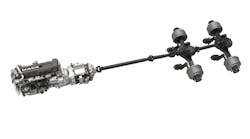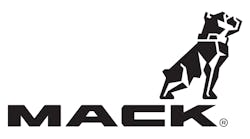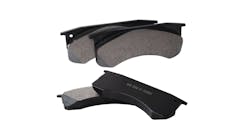Integration is defined as the act or process of combining different things into one. It’s joining parts that are typically unrelated into a single unit. It’s bringing harmony to dissimilar pieces.
When integration is applied to a powertrain – the engine, transmission and axles – it becomes the key to unlocking tremendous potential for improved performance and efficiency.
It should come as no surprise then that there’s been a lot of talk about integration in the trucking industry in recent years. With more stringent regulations and customer demands for productivity, many are turning to powertrain integration for answers.
Mack Trucks is on the leading edge of powertrain integration because it’s something Mack pioneered.
In the company’s early history, the Mack brothers saw that powertrain components from suppliers weren’t up to the task of meeting customers’ needs, so they decided to build their own. Their efforts yielded a philosophy that Mack follows to this day: components designed to work together simply work better.
Today, Mack manufactures its MP series engines, mDrive automated manual transmissions and Mack axles at the Hagerstown, Md., powertrain facility. Mack models with a fully integrated Mack powertrain receive a gold bulldog hood ornament.
The Great Enabler
Historically, integration between engines and transmissions involved just the hardware. In other words, the torque rise of the engine was matched to a transmission with the right gear steps to take advantage of that particular engine’s profile.
While that approach worked well historically, the significant increase in performance found in today’s powertrains require sophisticated electronics to precisely control engine and transmission operation. Applying Mack’s integration philosophy enables 100 percent communication between the major component ECUs to not only boost performance, but efficiency too.
Because Mack builds the engine, automated transmission and vehicle, all data is available to be shared all of the time between the truck’s various ECUs. This complete data-sharing between components enables a perfect match between the engine’s power output to the transmission and its shift points, resulting in increased productivity for customers through maximized performance and fuel efficiency.
The clearest example of powertrain integration maximizing efficiency is downspeeding – a practice that reduces engine cruise rpm to help save fuel. Models equipped with Mack’s Super Econodyne downspeeding package utilize a faster rear axle ratio to bring engine cruise rpm from around 1,400 rpm to around 1,150 rpm for a truck traveling at roughly 65 mph.
Because this new cruise rpm is at, or just above, the engine’s peak torque, complete communication between the automated transmission and engine ECUs is needed to effectively manage this level of performance.
Powertrain integration also enables other technologies, including a new feature recently introduced for the mDrive transmission: Mack Predictive Cruise. It is an intelligent cruise control system that constantly monitors speed, engine load, weight and the topography of a route. The system memorizes those parameters and stores them for use the next time the truck travels the same route.
Thanks to the complete integration of the powertrain, the Predictive Cruise is able to easily direct the transmission to select the best gear for the conditions, helping save fuel as it anticipates the road ahead.
Beyond The Powertrain
Another advantage integration brings is the ability to easily monitor the status of various components and systems within a vehicle. By way of example, Mack’s GuardDog Connect telematics system is fully integrated with the vehicle and monitors critical fault codes that could potentially shut down a truck or lead to an unplanned stop at the dealer.
Thanks to its complete integration with the truck and its components, GuardDog Connect is able to identify the root cause of the fault code and provide clear, actionable information regarding the repair – including instructions, a parts list and parts availability – to be sure the service technicians are fully prepared before the truck arrives for service. Efficiency and accuracy of repairs has improved significantly, with diagnostic and repair times decreasing by up to 70 percent and 21 percent respectively.
The Bottom Line
Integration has no doubt brought tremendous benefits to the trucking industry. By fully integrating the engine, transmission and other vehicle components – including telematics solutions – customers will see improvements to uptime, performance, productivity and fuel efficiency.
With that said, it is critical for any customer to work with their local dealer to ensure their vehicle specification is optimized to the particular application.
Scott Barraclough is the technology product manager for Mack Trucks (www.macktrucks.com), one of North America's largest producers of heavy duty trucks. It is a part of the Volvo Group (www.volvogroup.com), one of the world’s leading manufacturers of trucks, buses, construction equipment and marine and industrial engines.



